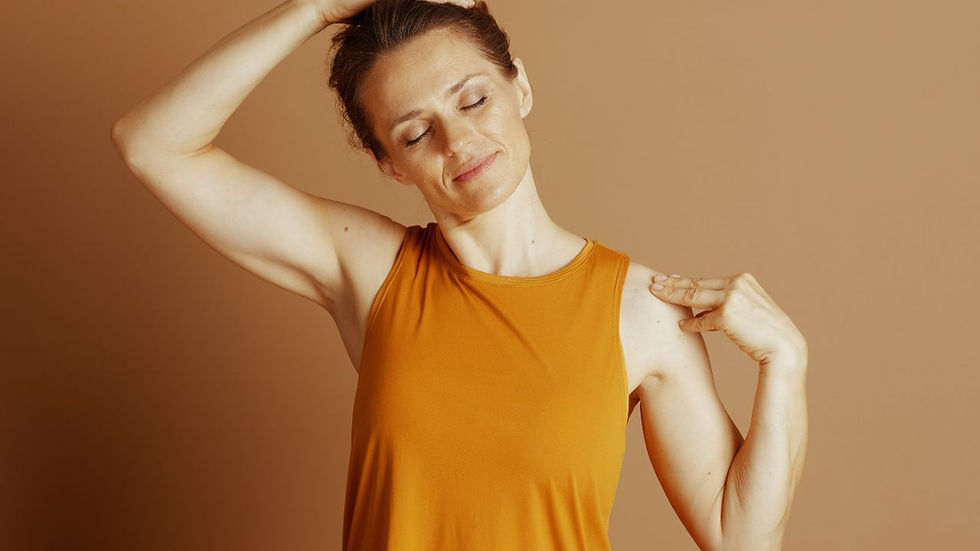The 2 different kinds of stretching and when to do them
- Ken Belveal
- Aug 2, 2021
- 2 min read
There are typically two different types of stretching - static and dynamic. Read on to find out the difference and when is the best time to use each.

Static vs dynamic
A static stretch is held in position for a certain period.
The person moves into the stretch slowly until tension is felt without pain. That position is held for a relatively long time – 30 seconds to 2 minutes. This approach tricks the body’s own defense mechanism because as you hold the position, the muscle dismisses the possibility of danger and relaxes, allowing it to elongate.
Static stretching can be done before, during and after exercise. However, studies have shown that static stretching before exercise can limit performance. If you are lifting weights, it is a good idea to stretch between sets. This will reduce soreness and increase flexibility. The stretches between the sets do not have to be as long as the post-workout stretching. It also gives you something to do that is beneficial until the next set.
Stretching the antagonist muscle - the muscle on the opposite side of the joint you are working (i.e. biceps vs. triceps) – is beneficial. If the antagonist is flexible and pliable, the exercise will be easier and less likely to injure the targeted muscle because the antagonist is not working against it.
Static stretching after the workout has been proven to reduce DOMS – delayed onset muscle soreness. That soreness in the muscle that peaks typically 48 hours after an intense workout.
A good static stretch to improve posture is the W in the corner.
Stand facing a corner
Place your hands in a “don’t shoot, I give up” position
Place forearms against the wall
Step forward with one foot into the corner
Lean your whole body forward – no leaning at the waist
Hold for 30 seconds to 2 minutes
A stretch should be felt in the chest area
This stretches the pectoralis major muscles of the chest. When these muscles are tight, they tend to internally rotate the arm causing slumped shoulders and putting stress on the neck and upper back.
Dynamic stretching involves repeated movements at the joint you want to influence.
Dynamic stretches are active movements where joints and muscles go through a full range of motion. They can be used to help warm up your body before exercising and should not limit performance. They usually mimic the movement of the activity or sport you are about to perform. For example, swimmers may circle their arms before getting into the water. They can also be used as a series of movements to get the body moving before any type of exercise.
Here is a list of dynamic stretches for joggers:

Leg swing at the hip front to back – perform 10 repetitions each side.
Leg swing at the hip side to side – perform 10 repetitions each side.
Kick heel to buttock while taking 20 steps.
Raise knee as high as possible while taking 20 steps.
Walk on toes for 20 steps.
Walk on heels for 20 steps.
It is best to use dynamic stretching to warm up the body and then static stretching during and after exercise. This combination will help reduce DOMS, improve flexibility and reduce the possibility of injury.
Enjoy!
Sign up to receive our blog here.








Comments